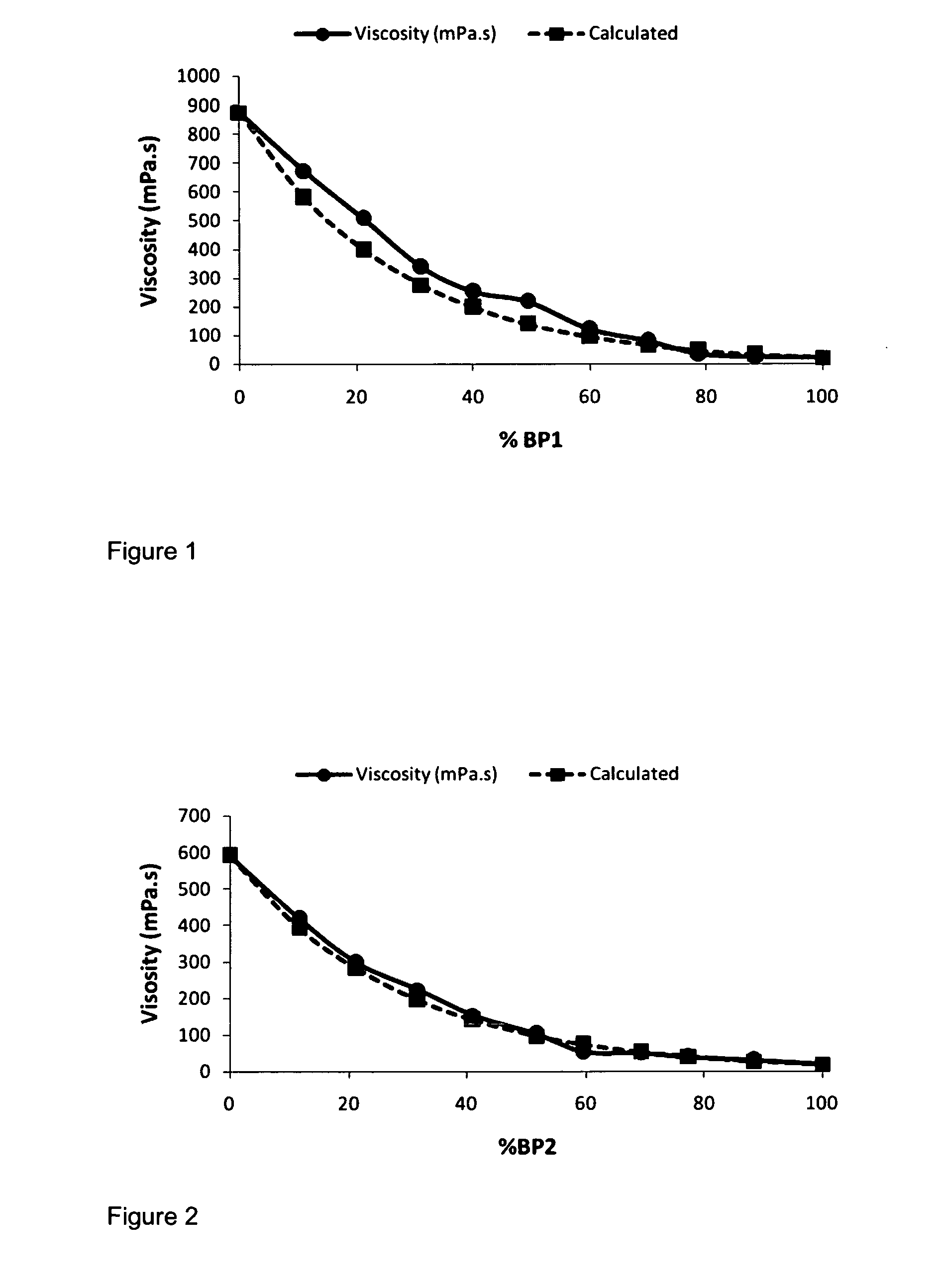Use of Branched Copolymers in Polymer Blends
a polymer blend and copolymer technology, applied in the direction of sealing/packing, inks, borehole/well accessories, etc., can solve the problems of encroachment on environmental laws, high solution or melt viscosity is not desirable, and large amount of solvent is often required
- Summary
- Abstract
- Description
- Claims
- Application Information
AI Technical Summary
Benefits of technology
Problems solved by technology
Method used
Image
Examples
examples
[0136]The present invention will now be explained in more detail by reference to the following non-limiting examples and drawings wherein:
[0137]FIG. 1—illustrates the experimental and predicted solution viscosities for a blend of a branched addition polymer (BP1) and a linear polymer (LP5) of varying solution viscosities.
[0138]FIG. 2—illustrates the experimental and predicted solution viscosities for a blend of a branched addition polymer (BP2) and a linear polymer (LP1) of varying solution viscosities.
[0139]FIG. 3—illustrates the experimental and predicted solution viscosities for a blend of a branched addition polymer (BP3) and a linear polymer (LP2) of varying solution viscosities.
[0140]FIG. 4—illustrates the experimental and predicted solution viscosities for a blend of a linear polymer (LP1) and a linear polymer (LP13) of varying solution viscosities.
[0141]In addition, in the following examples, copolymers are described using the following nomenclature:
(MonomerG)g (Monomer J)j ...
PUM
| Property | Measurement | Unit |
|---|---|---|
| Length | aaaaa | aaaaa |
| Fraction | aaaaa | aaaaa |
| Fraction | aaaaa | aaaaa |
Abstract
Description
Claims
Application Information
 Login to View More
Login to View More - R&D
- Intellectual Property
- Life Sciences
- Materials
- Tech Scout
- Unparalleled Data Quality
- Higher Quality Content
- 60% Fewer Hallucinations
Browse by: Latest US Patents, China's latest patents, Technical Efficacy Thesaurus, Application Domain, Technology Topic, Popular Technical Reports.
© 2025 PatSnap. All rights reserved.Legal|Privacy policy|Modern Slavery Act Transparency Statement|Sitemap|About US| Contact US: help@patsnap.com


